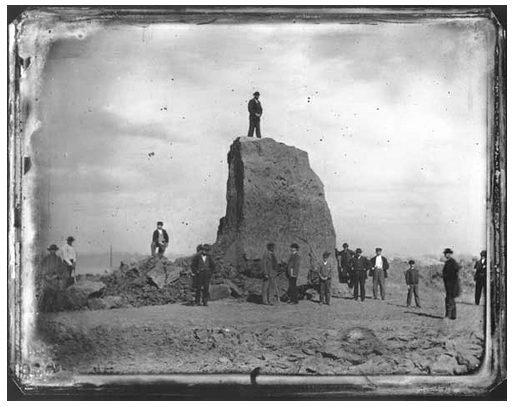Earthen ones, yes, at Cahokia. Also called mounds.
St. Louis had them too. But more mound than pyramid.
 .
.
At St. Louis all but one have been destroyed.

Posted on 04/24/2021 8:58:42 AM PDT by BenLurkin
Excavations at the city, famous for its pre-Columbian mounds, challenge the idea that residents destroyed the city through wood clearing.
A thousand years ago, a city rose on the banks of the Mississippi River, near what eventually became the city of St. Louis. Sprawling over miles of rich farms, public plazas and earthen mounds, the city — known today as Cahokia — was a thriving hub of immigrants, lavish feasting and religious ceremony. At its peak in the 1100s, Cahokia housed 20,000 people, greater than contemporaneous Paris.
By 1350, Cahokia had largely been abandoned, and why people left the city is one of the greatest mysteries of North American archaeology.
Now, some scientists are arguing that one popular explanation — Cahokia had committed ecocide by destroying its environment, and thus destroyed itself — can be rejected out of hand. Recent excavations at Cahokia led by Caitlin Rankin, an archaeologist at the University of Illinois at Urbana-Champaign, show that there is no evidence at the site of human-caused erosion or flooding in the city.
Rather than absolutely ruining the landscape, she added, Cahokians seem to have re-engineered it into something more stable.
(Excerpt) Read more at nytimes.com ...
Where did you buy them from? Big Lots? /sarc>
It is usually cultish cruelty that brings a top-down society to its demise.
The cultish part of downfall derives from the priestcraft which, while things are going well, takes credit for things going well (harvests, health, victories, etc). As things begin to go poorly, cult priests insist it’s because the people are negligent in appeasing the gods, so the priests demand more. As circumstances continue to worsen, the sacrifices demanded of the people become intolerable. The people rebel, revolt, overthrow and execute the tyrants.
The closely-held secrets of the advanced society go to the grave with the adepts. Unaware of how to run the society as before, and perhaps haunted by it, the peons scatter or are absorbed by lesser tribes.
Or, as literate people call them, "natives" -- the opposite of "immigrants".
Earthen ones, yes, at Cahokia. Also called mounds.
St. Louis had them too. But more mound than pyramid.
 .
.
At St. Louis all but one have been destroyed.

How did you know? :)
Sounds like the direct consequences of liberalism struck them...
Pyramids were built all over the world after the dispersion of Babel.
“on the banks of the Mississippi River”
I guess these people think “pre-Columbian” means “pre-river floods”.
“destroyed the city through wood clearing”
Wood became increasing more expensive and hard to get as colonial Philadelphia grew. Forests were cut down for many miles beyond the city.
Ben Franklin developed his ‘Franklin stove’ to utilize wood more efficiently.
NYC also had a big wood supply problem in the early 19th Century, but coal from NE Pennsylvania was brought into NYC, permitting NYC to continue growing.
Hi.
Ever been to Pahokee FL?
Or Okochobee FL?
25 ft. mounds. They call it a levy.
5.56mm
“What Doomed the Great City of Cahokia?”
It was in Illinois.
They must have had a series of democrat chiefs. That would doom any civilization.
I know what happened... Their version of AOC told them they had only 10 years, but they didn’t listen to her... 😀
There are more pyramids in Mexico than all the rest of the world combined.
As a site of much immigration, Cahokia was flooded with migrants, believed to be members of the various Gimmedat tribes, who took part in the good things there but would not work.
No, there was a different, separate large mound city where St. Louis now stands. Cahokia lies on the east side of the river, in the farmlands between the bluffs of Collinsville, and the burned-out wreckage of East St. Louis a/k/a Beirut-on-the-Mississippi.
Cahokia is the name of a later group of Indians that had no knowledge of the Indians who originally built the mounds. No one knows what the original inhabitants called themselves or the city.
I think you probably nailed it. The elites developed more and more power until at some point the people, who were likely more seasonal in their habitation than their European counterparts [Indians farming in spring and summer in the area of the city, and hunting in fall and winter in the outermost suburbs], realized they could just stay in the suburbs or frontier areas and be better off.
Really? Are thry still there?
Never mind, I see the photos. Thanks. I feel so stupid about history.
Disclaimer: Opinions posted on Free Republic are those of the individual posters and do not necessarily represent the opinion of Free Republic or its management. All materials posted herein are protected by copyright law and the exemption for fair use of copyrighted works.